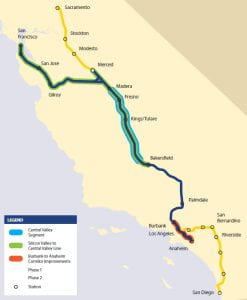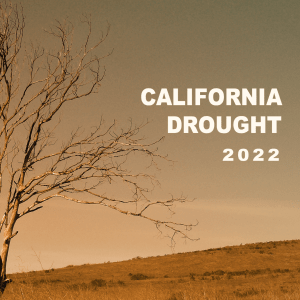Is California’s High Speed Rail Bound for Failure?
There’s truly no place like home for the holidays, and if you’re anything like me, you’re dying for a way to travel home for winter without having to take a car or a plane. I’m from San Diego, California, and the only way to get there from the Bay Area (at least in an efficient timeframe) is by taking an expensive flight or driving 9+ hours through the Central Valley and Los Angeles. In the most populous state, there should be a more timely and sustainable way to connect the major population hubs of Southern and Northern California, possibly via a high speed rail.

A bullet train was first proposed for California in the 1980s. Nothing like a high speed rail existed in the United States already, so how high speed rail was to be constructed in California would serve largely as a test for all future endeavors. However, it wasn’t until 2008 that California voters first approved a bond issue for the project while under the impression that the rail line would be finalized by 2020 and would cost $33 million. Construction for the project was authorized in 2012. And yet, construction has just begun on a “starter” line connecting cities in California’s Central Valley. Today, the “final plan” for the project includes a budget of $113 billion and “according to projections widely used by engineers and project managers, the train could not be completed in this century.” (New York Times 2022)
There’s a lot of concern surrounding this project and the decisions that have been made thus far. Due to political red tape, corruption, inefficient spending, and a lack of strict planning, many think that the plan is doomed to fail. The high speed rail’s construction in California was supposed to serve as a role model for the rest of the states. However, now it seems to be more of “what not to do”.
However, I’m of the mindset that progress is progress. In September, California released a huge legislative package to reduce the state’s oil use, cut air pollution, accelerate the state’s transition to clean energy, and achieve carbon neutrality by 2045. The high speed rail project would definitely help California to achieve its climate goals. A huge part of embracing sustainability and becoming more climate resilient is by investing in and building sustainable infrastructure, such as public transportation. This high speed rail could totally change the game for so many Californians by greatly reducing their reliance on cars for journeys between major metropolitan areas in the state. Besides, ambitious projects like these usually take a long time to be fulfilled, and as they say: “Rome wasn’t built in a day.”
Regardless of the success of California’s high speed rail project thus far, increased public transit options are incredibly important to get cars off the road and reduce CO2 emissions. If you are a resident of California, or even just a concerned citizen, please express your concerns and thoughts on this project to your representatives in the California State Legislature. If our representatives hear how their constituents feel about this project, then it could greatly influence the direction the high speed rail project in the U.S. goes.
Works Cited
Island, Marie. “Governor Newsom Signs Sweeping Climate Measures, Ushering in New Era of World-Leading Climate Action.” Office of Governor Gavin Newsom, 16 Sept. 2022, https://www.gov.ca.gov/2022/09/16/governor-newsom-signs-sweeping-climate-measures-ushering-in-new-era-of-world-leading-climate-action/.
Vartabedian, Ralph. “How California’s Bullet Train Went off the Rails.” The New York Times, https://www.nytimes.com/2022/10/09/us/california-high-speed-rail-politics.html.
Vartabedian, Ralph. “Governor, Legislators Won’t Budge in High-Speed Rail Dispute.” CalMatters, 6 May 2022, https://calmatters.org/politics/2022/05/california-high-speed-rail-standoff/.

